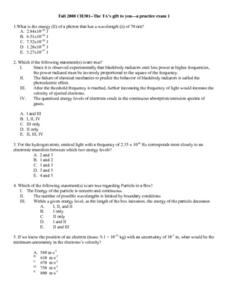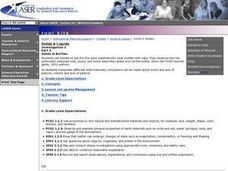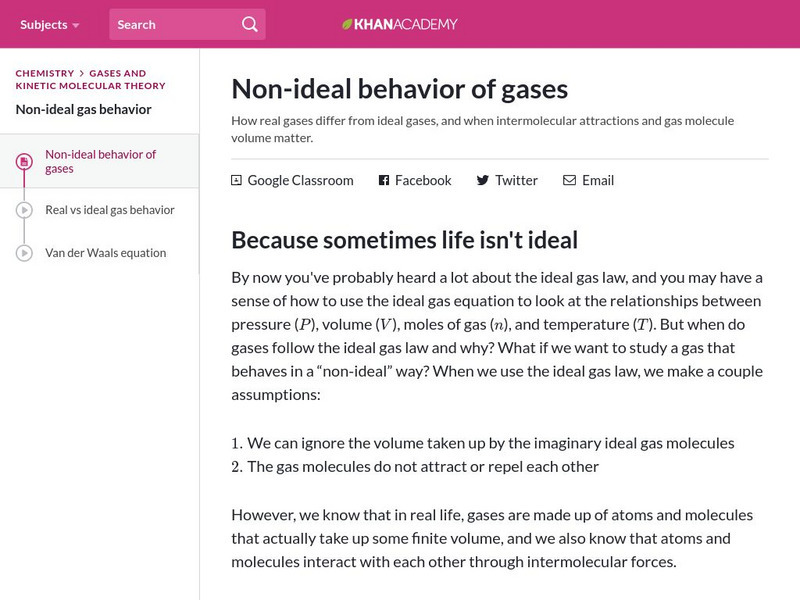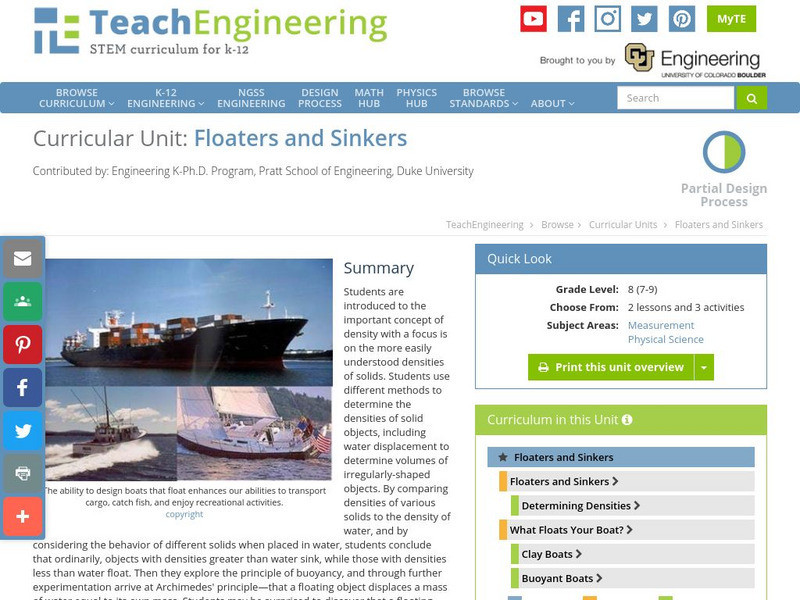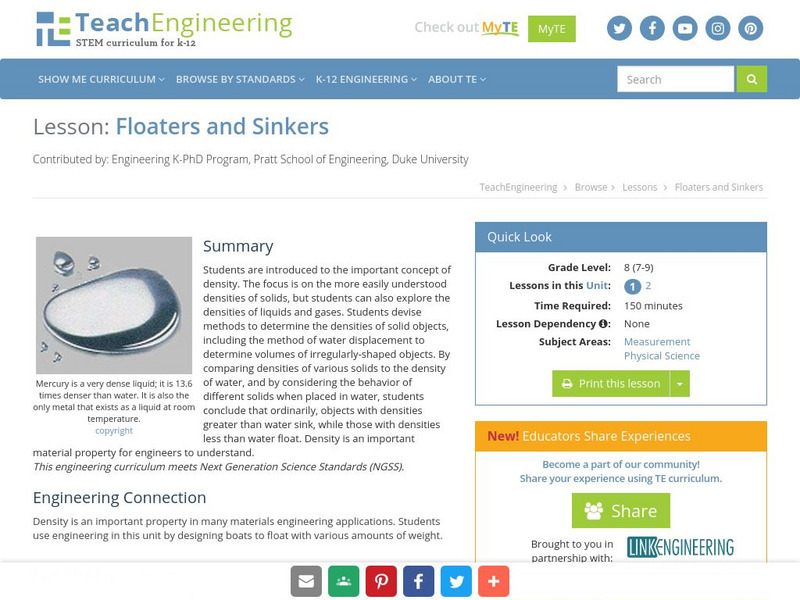Curated OER
Floating and Falling Flows
Students discover fluid dynamics related to buoyancy through experimentation and optional photography. Using one set of fluids, they make light fluids rise through denser fluids. Using another set, they make dense fluids sink through a...
Curated OER
Measuring Body Fat
In this body fat measurement activity, students will conduct an experiment to determine how the "under-water weighing" technique of measuring body fat works. Once the experiment is complete, students will complete 1 short answer question.
Curated OER
Soak it up
Students complete a hands on activity using hard boiled eggs, food coloring, tape, cups, water, and a knife to show how permeability affects animals. In this permeability lesson plan, students complete this activity and learn how...
Curated OER
Where My Peeps At?
Learners conduct a series of activity that demonstrates Charles' and Boyle's Law. In this chemistry instructional activity, students determine the relationship among pressure, volume and temperature. They solve problems using...
Curated OER
States of Matter and Gas Laws
In this matter worksheet, students review the states of matter and the gas law formulas and equations. Students then complete 7 multiple choice questions and 6 problems.
Curated OER
Cool Corals
Students explore corals and polyps. In this coral reef lesson students divide into groups and prepare a written report.
Curated OER
Chemistry 301
In this chemistry 301 worksheet, students answer questions as it relates to the electron configuration of given elements. Students use the periodic table to assist in their interpretation of the questions provided.
Curated OER
Calculate Your Contribution
Learners assess the environmental impact of their transportation choices. They keep a transportation journal and use a website to calculate vehicle emissions for themselves and their class. They evaluate their transportation choices.
Curated OER
Solids in Bottles
Students use funnels to put the five solid materials into clear bottles with caps. They observe how the particulate materials look, sound, and move when they shake and roll the bottle. Finally, students write "sound and touch" poetry.
Curated OER
Thar She Blows!
Young scholars identify the advantages and disadvantages of wind farms and turbines. They examine how weather conditions can affect their effectiveness and how engineers are trying to solve the problem. They discover how engineers use...
Curated OER
Fireplace detail
Students investigate the different type of architectural designs for fireplaces. They participate in a discussion that starts with several key questions. The lesson progresses and students complete the worksheet accompanying the lesson.
Curated OER
Breaking News English: International Car Free Day
In this English learning exercise, students read "International Car Free Day," and then respond to 47 fill in the blank, 7 short answer, 20 matching, and 8 true or false questions about the selection.
Curated OER
Heat Transfer and Pollution
Pupils perform computer simulations on air dispersion. In this chemistry lesson plan, students calculate energy transfer based on specific heat and temperature change. They explain the causes of smog.
Khan Academy
Khan Academy: Non Ideal Behavior of Gases
Find out how real gases differ from ideal gases, and when intermolecular attractions and gas molecule volume matter.
University of Florida
Chemistry 2041 Lecture Notes: Ideal Gases
The ideal gas law is presented and explained. The derivation of other gas laws is performed. Gas behavior is explained in terms of gas laws. Excellent graphics.
Other
Atoms in Motion: Noble Gases
The ideal gas law is an empirical law; it's a relationship between the pressure in a system of gases to the volume, the temperature, and the number of gas atoms/molecules in the system. This "law" is valid if the gas atoms/molecules are...
Texas Education Agency
Texas Gateway: The Ideal Gas Law
Explore the thermal behavior of gases, in particular, examine the characteristics of atoms and molecules that compose gases. Learn about the ideal law of gases in terms of molecules and moles. Multiple formulas and examples are provided.
State University of New York
State University of New York: The Ideal Gas Law
The behavior of gases near room temperature and 1 atm pressure can be described using four main properties: amount, pressure, volume, and temperature. In this simulation the mass, pressure and temperature can be varied.
PBS
Pbs Learning Media: Buoyancy Brainteasers: Balloon in Car Puzzler
This interactive brainteaser from the NOVA: "Voyage of Doom" Web site challenges you to explain the behavior of a helium-filled balloon in a moving car.
TeachEngineering
Teach Engineering: Floaters and Sinkers
Through this curricular unit, students are introduced to the important concept of density. The focus is on the more easily understood densities of solids, but students may also explore the densities of liquids and gases. Students devise...
TeachEngineering
Teach Engineering: Floaters and Sinkers
This lesson introduces students to the important concept of density. The focus is on the more easily understood densities of solids, but students can also explore the densities of liquids and gases. Students devise methods to determine...






